I’ve now visited and tracked a quarter of the ex-Woolies estate – but what have they all become?
Headlines:
- 214 ex-Woolworths stores visited, out of the 807 that closed following its collapse
- Of those, only 12 currently empty (6%)
- 7 continually empty (3%)
- 35 with two or more post-Woolies uses (16%).
Looking at my blog, you might be forgiven for thinking that I’ve forgotten about Woolworths in recent months.
It’s certainly true that the number of Woolies-related posts has slowed down a bit – partly due to there being so much going on both in my working life and elsewhere on the high street. I’ve still been mopping them up on my travels, however, as the audience at last month’s Co-operatives UK National Retail Consumer Conference found out when I used the fate of Britain’s ex-Woolworths stores as a framework through which I could give a view of the current retailing environment and the state of the UK high street.
It is a compelling way of looking at how our town centres have changed during the economic downturn – after all, Woolworths went from 807 stores to no stores in just 40 days at the end of 2008, its demise leaving hundreds of towns without one of their most important and long-established retailers.
At the same time, however, it has provided a unique opportunity for successful retailers, hungry for space, to snap up what were, in many (but not all) cases, great locations that Woolworths had occupied for decades. Chesterfield, for example, was one of the first ex-Woolworths I ever photographed – just three days after its closure – but its departure provided an opening for H&M to enter the town.
So where I am up to now? Well, I’ve so far visited, photographed and tracked 214 of the 807 stores that closed following Woolworths’ 2008 collapse – or just over a quarter of the entire estate – meaning that, at this rate, I’ll have got them all by 2025. Whenever I’ve visited a store, I’ve kept track of any subsequent changes in its use, ensuring that my records for the 214 (and rising) stores are consistently as up to date as possible.
In terms of geographical spread, my 214 stretch from Penzance to Inverness and Holyhead to Ipswich, and include every region in which Woolworths traded apart from Northern Ireland, the Channel Islands and the Isle of Man, making it a good snapshot of the estate as a whole.
I’ve also accrued another 150 Woolworths sites that had closed or relocated before the company fell into administrations – like the long-gone store in Crook (below), which closed in 1973, the original (pre-1968) Woolworths location in Alnwick, or the sites in London’s Oxford Street that have recently been part of the storyline in ITV’s retail drama Mr Selfridge. While these locations are an important and fascinating part of both Woolworths’ past and our retail history more generally, I count them separately from the 2008 closures, so didn’t include them in my analysis for the NRCC audience.
If we just look at those 214 then, what do we learn? Certainly, the first thing to say is that most of them have become something. Only 12 – or less than 6% – are currently empty, reminding us that even as some retailers collapse, others continue to do well.
In fact, even fewer of those 214 stores – just 7, such as Newton Aycliffe, above – have remained empty the whole time, with the others only becoming empty when a successor to Woolworths has, in turn, moved out or collapsed itself.
Indeed, it’s fascinating quite how much churn there has been across the ex-Woolworths estate over the last four years. Of my 214, 35 stores (or about one in six) have had two or more uses in that time, often where other retailers – particularly TJ Hughes, Peacocks, Alworths and Ethel Austin – have collapsed themselves. Again, however, these spaces have generally been reoccupied fairly quickly.
So, as of now, who are the occupants of our high streets’ former Woolworths? Well, I’ve compiled a top ten for you, based on my sample to date.
At 10, with seven stores, is M&Co, one of many fashion retailers that have picked up selected Woolworths sites, among them also Store Twenty One (which is now itself in difficulties), Next, TK Maxx and Marks & Spencer. In the North East, you may recall that M&Co has taken the former Woolworths site in Alnwick.
At 7, three retailers each have eight former Woolworths sites: first Heron Foods, the Hull-based frozen food chain, which has grown to 170 shops; second, the variety store chain Home Bargains; and third, Tesco, under both its Express and Metro banners. Again, all three are represented among the North East’s ex-Woolies locations too, including Home Bargains in Berwick, Tesco Metro in Durham and Heron Foods in Ashington, Barnard Castle and Wallsend.
In joint 5th, with nine stores a piece, are the small-town department store chain, The Original Factory Shop; and Poundworld, operating under both its eponymous fascia and its Discount UK multi-price format. Again, this echoes the North East picture, where The Original Factory Shop took the Spennymoor ex-Woolies site, and Discount UK is represented at Middlesbrough, Newcastle and Portrack Lane in Stockton.
At 4, with 11 stores, is the hardware retailer Wilkinson, which has particularly used the opportunity of Woolworths’ demise to expand in shopping centre locations in Scotland and the South West, where it previously had a limited presence.
At 3, with 13 ex-Woolworths sites, is the frozen food specialist Iceland. Many of these, like the shops in Hexham and Morpeth, are locations that Iceland picked up in the very first disposal of ex-Woolies sites in January 2009, just days after the final stores closed their doors.
At number 2, with 18 stores, is the discount variety store B&M, under its B&M Bargains and B&M Home Store fascias. With four of the North East’s 33 ex-Woolies sites under its belt, B&M is, together with Store Twenty One, the region’s biggest occupier of former Woolworths locations.
And number 1, as you might have guessed, is the single-price retailer Poundland, occupying 24 – or more than one in ten – of all the ex-Woolworths that I’ve tracked, including many sites mopped up from the other collapsed retailers that I mentioned earlier.
Again, this mirrors the North East, where Poundland has taken over the former Woolworths sites in Gateshead and South Shields, though Peterlee is home to the unusual sight of an ex-Woolies that Poundland has pulled out of, the property now displaying visual reminders of both its previous incarnations.
While the bulk of Britain’s former Woolworths estate has been taken over by other retail chains, there are some local curiosities too. There’s a smattering of independent retailers among the stores I’ve visited – many of them, like Ledbury’s Wellworth It!, specialising in homeware or hardware – and even the odd Costa Coffee or Wetherspoon’s.
So, other than being merely interesting, what does this particular window on the high street tell us about how our retail centres are faring?
Well, it brings into question, one might argue, the idea that the high street is dying, and that all the retail traffic is one way – heading towards the Internet. Of course, online and multichannel are becoming ever more prominent features of the retail landscape, and ignoring that would be dangerous. However, retailers are still opening stores on the high street, as the 94% of ex-Woolworths back in use demonstrate, because a physical shop can still perform a particular and useful purpose.
Indeed, if we look at those expanding and successful retailers who have taken over most ex-Woolworths space, there are several key themes that we can pull out.
First – and it sounds obvious – it’s clear that in terms of what these new stores sell, people do still want to buy food, clothing and homewares on the high street.
And in terms of what they offer, as a shopping experience, there are also several common and overlapping themes, most obviously the idea of value. Almost without exception, the retailers in my top ten have a very clear and well understood brand, built around a message that customers get a great deal there: not just about it being cheap, but about offering quality products and decent service for a fair price. Wilkinson, for example, attempts to encapsulate this in its modern positioning as “the home of family value”.
Another theme that I’d pull out is convenience. With the obvious exception of Tesco, most of the retailers featured in the top ten are ones where all or most of their business still takes place in physical stores, and where being accessible at the heart of the high street is a virtue. Certainly, the march of the discount variety stores into new product areas – most notably a growing grocery offer – shows that consumers aren’t averse to purchasing a range of different products under one roof.
And the third theme relates to the good experience that you typically get in a value retailer, even as they ruthlessly keep tabs on their costs. It’s little wonder that established mid-market rivals struggle with old or poorly maintained stores when growing retailers like Poundland and Home Bargains (above) manage to offer a consistently good instore experience, with bright interiors, clear signage and plenty of space to move around.
Of course, going down the discount variety store route is no panacea – after all, there’s a reason why a lot of independent pound shops that have opened up on ex-Woolworths sites, such as the one in Girvan, above, have failed to fly.
However, those retail principles of offering value, convenience and experience are ones that chime across the industry. Retailers can’t succeed merely by copying what others do, but the chains that are thriving in the space left by Woolworths certainly offer some good lessons in honing a proposition that resonates with customers at a time of immense change on the high street.
My retail consultancy business, CannyInsights.com, provides bespoke place- and sector-specific market intelligence, including detailed coverage of ex-Woolworths locations nationwide. It also works with retailers to improve their stores, customer communications and market knowledge. For more information, visit www.cannyinsights.com, drop me an email, or give me a call on (0191) 461 0361.


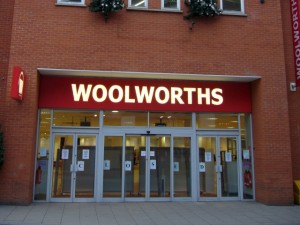


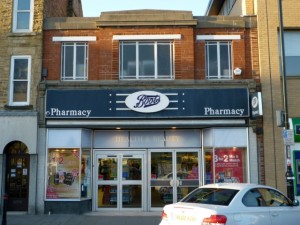
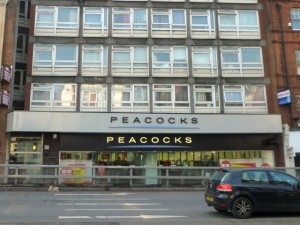





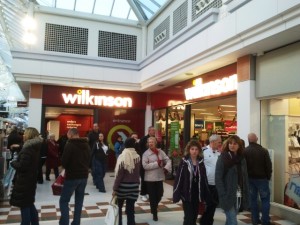


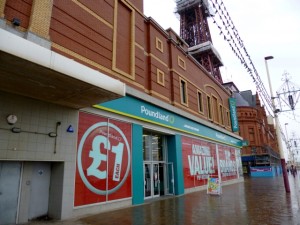

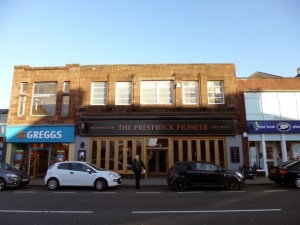




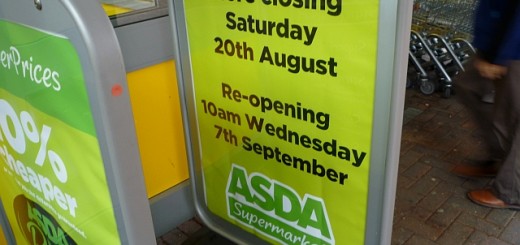


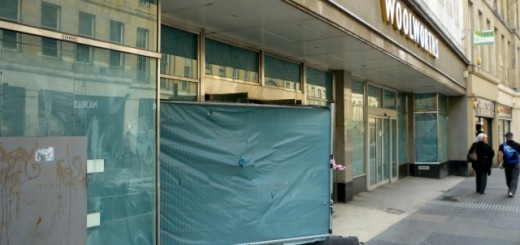





Woolworths Halesowen is now a combined Ponden Mill and the post office. Strange combination but it works
My fiance and myself are ex-staff of Woolies in Hong Kong, we got to know each others at Woolworths HK sourcing, working as partners. End of this year I plan to go honeymoon with him and take photos with Woolworths banner in UK to complete the story. Do you think there is still any empty Woolworths store / office / backdrop…in UK?
Hi Janet! I’m not sure if the HK Woolworths has any connection to the UK one – my understanding is that it may be linked instead to Woolworths Australia, which has no connection to the historic UK/US business other than copying the name. Still, I think there are a few Woolworths signs still remaining – I’ll do some digging and perhaps work it into a blog :)
Very interesting!
Just for information the ex-Wollies in Nuneaton did trade briefly as a TJ Hughes, then they closed because they folded (and had an upstairs too!)
This store is now a 99p stores, still with double entrances but no upstairs.
Interestingly I believe this is one of the biggest 99p stores in the area.